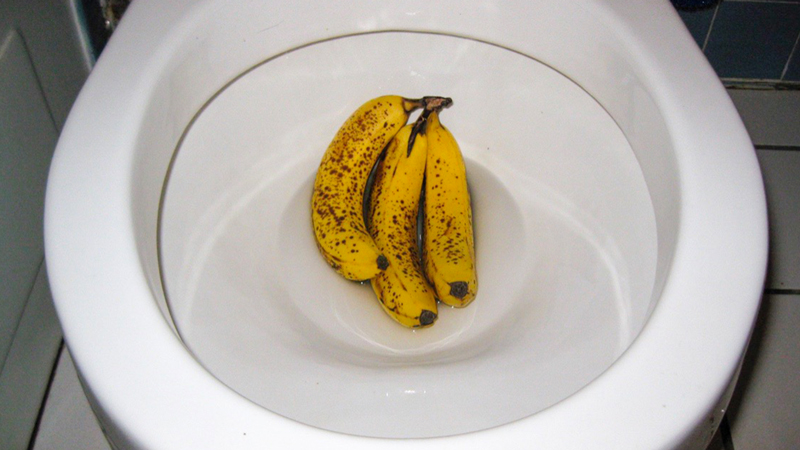Are You Permitted to Dispose of Food Waste in the Toilet?
Are You Permitted to Dispose of Food Waste in the Toilet?
Blog Article
Just how do you really feel in regards to Is it safe to flush food (especially rice) down the toilet??

Intro
Lots of people are frequently confronted with the problem of what to do with food waste, especially when it comes to leftovers or scraps. One usual concern that develops is whether it's okay to flush food down the bathroom. In this article, we'll look into the reasons why individuals may think about purging food, the repercussions of doing so, and alternative approaches for proper disposal.
Reasons people may take into consideration purging food
Lack of recognition
Some people might not understand the potential harm triggered by purging food down the commode. They might mistakenly think that it's a safe technique.
Comfort
Purging food down the bathroom might appear like a quick and easy solution to disposing of undesirable scraps, especially when there's no close-by trash can offered.
Laziness
In some cases, people may simply select to flush food out of large negligence, without thinking about the consequences of their activities.
Repercussions of flushing food down the toilet
Environmental impact
Food waste that ends up in waterways can add to pollution and injury marine ecological communities. Additionally, the water made use of to flush food can strain water resources.
Plumbing concerns
Flushing food can cause clogged pipes and drains, triggering pricey pipes fixings and troubles.
Types of food that should not be flushed
Coarse foods
Foods with fibrous appearances such as celery or corn husks can get tangled in pipes and cause obstructions.
Starchy foods
Starchy foods like pasta and rice can absorb water and swell, bring about clogs in pipelines.
Oils and fats
Greasy foods like bacon or food preparation oils need to never be purged down the commode as they can strengthen and trigger blockages.
Correct disposal methods for food waste
Using a garbage disposal
For homes equipped with garbage disposals, food scraps can be ground up and flushed with the pipes system. Nevertheless, not all foods appropriate for disposal in this manner.
Recycling
Certain food packaging materials can be recycled, minimizing waste and minimizing environmental influence.
Composting
Composting is a green means to take care of food waste. Organic products can be composted and made use of to enrich dirt for gardening.
The relevance of correct waste management
Minimizing ecological damage
Correct waste monitoring methods, such as composting and recycling, help reduce contamination and maintain natural deposits for future generations.
Safeguarding pipes systems
By preventing the method of flushing food down the commode, home owners can avoid expensive pipes repair work and preserve the stability of their pipes systems.
Verdict
In conclusion, while it might be tempting to purge food down the commode for ease, it is very important to recognize the possible repercussions of this action. By adopting correct waste administration practices and dealing with food waste responsibly, people can contribute to much healthier pipes systems and a cleaner environment for all.
FLUSH FOOD DOWN THE TOILET?
FLUSHING FOOD CAN CAUSE BLOCKED DRAINS IN YOUR HOME
All of the plumbing fixtures in your home are connected to the same sewer pipe outside of your home. This outdoor sewer pipe is responsible for transporting all the wastewater from your home to the Council sewer mains. Even small pieces of food that go down the kitchen sink can cause problems for your sewer. It should therefore be obvious that flushing larger bits of food, such as meat, risks a clog in either the toilet itself or the sewer pipes. Flushing greasy food is even more problematic because oil coagulates when it cools, coating the interior lining of your pipes.
THE TOILET IS NOT A BIN
Food isn’t the only thing that people shouldn’t be flushing down the toilet. People use the toilet to dispose of all kinds of things such as tampons, makeup wipes, dental floss, kitty litter and even underwear. Water goes to great lengths to educate residents about the high costs and stress placed on wastewater treatment systems simply from people flushing the wrong stuff down the toilet. It costs taxpayers millions of dollars each year, and homeowners thousands in blocked drain repairs.
FLUSHING FOOD IS A WASTE OF WATER
Flushing food is a waste of our most precious resource - water. In June this year Level 1 water restrictions were introduced to protect water supply from drought conditions. Much of New South Wales continues to be affected by prolonged drought with recent figures revealing up to 97 per cent of the state remains in drought. Depending on whether you have a single or dual flush toilet, every single flush uses between five and 11 litres of water. In the current climate this is a huge amount of water to be wasting on flushing food that should be placed in the bin (or better yet, the compost).
https://www.jabplumbingsolutions.com.au/blog/can-you-flush-food-down-the-toilet

I recently found that content on Think Twice Before Flushing Food Down Your Toilet when doing a search on the internet. Kindly take a moment to promote this blog post if you appreciated it. We appreciate your readership.
Call Report this page